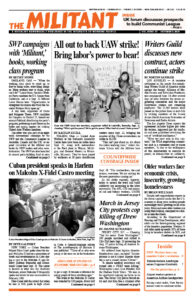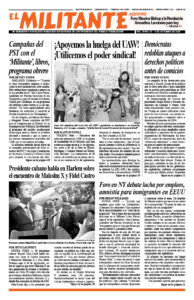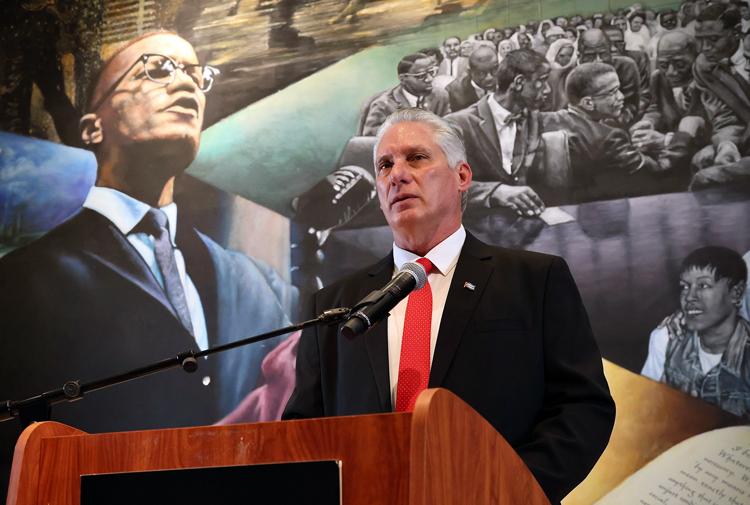NEW YORK — Cuban President Miguel Díaz-Canel spoke about the impact Malcolm X had on a generation of youth and revolutionaries in Cuba during a visit to the Malcolm X and Dr. Betty Shabazz Memorial and Educational Center here Sept. 18. The center is located in what was the Audubon Ballroom, where Malcolm X frequently spoke and where he was assassinated in February 1965.
Díaz-Canel told the crowd that when he was in 10th grade in high school in Cuba, a Spanish-language edition of The Autobiography of Malcolm X was published. “Those of us who were young at the time ran to the bookstores to get a copy. It became a reference for young people of those rebellious ages.”
The event at the Malcolm X Center was attended by 120 people. About half were from the Cuban diplomatic corps and reporters here to cover Díaz-Canel’s U.N. speeches and related meetings, and half from U.S. political organizations, groups opposed to Washington’s economic war against Cuba and individuals active in the Black struggle.
The Cuban president was welcomed by representatives of the center and introduced by Rosemari Mealy, author of a book about the Sept. 19, 1960, meeting between Cuban revolutionary leader Fidel Castro and Malcolm.
Díaz-Canel said that revolutionists in Cuba “will never forget the role of Malcolm X in the invitation for the rebel leader and his delegation to stay at the Hotel Theresa, in the heart of the Black neighborhood of Harlem.” The Midtown hotel where they had been lodged gave them difficulty. Sept. 19 would be the 63rd anniversary of the meeting between Castro and Malcolm X, he added.
Thousands of residents of Harlem and Cubans from New York gathered outside the Theresa to welcome Castro. They listened to Fidel on the radio. Militant correspondent Harry Ring reported that when Cuban supporters of the revolution chanted “Venceremos,” Harlemites asked “What does that mean?” People said, “We will win.” The Harlem crowd shouted back, “Venceremos!”
After the meeting Malcolm X told the press, “Premier Castro has come out against lynching, which is more than President Eisenhower has done. Castro has also taken a more open stand for civil rights for Black Cubans.”
The relationship between Fidel and Malcolm X was “based on solidarity,” Díaz-Canel added. “And our common struggle, trying to break the unjust blockade the U.S. government has imposed on Cuba, is also a struggle to give continuity to that spirit.”
Ilyasah Shabazz, one of Malcolm’s six daughters, also spoke. “My father was a great admirer of Fidel Castro,” she said. He admired how Castro led the Cuban people to liberate themselves from the yoke of imperialism, only 90 miles from the U.S., Shabazz added.
Castro’s stay at the Theresa Hotel, she said, was an act of solidarity with the struggle against racism in the U.S. Looking back at his time in Harlem, “Castro said, ‘We have always been in solidarity with the struggle of Black people, the marginalized, and the poor in the United States. We have always been in solidarity with them and they have been in solidarity with us.’”
In 1960 Malcolm X was a leader of the Nation of Islam. By March 1964 he had broken with the Nation, which blocked its members from taking part in political activity. He traveled to Africa, meeting revolutionaries in Algeria and elsewhere. Increasingly Malcolm spoke as a revolutionary leader of the working class.
Malcolm X’s “intense activity as a fighter of the African American people and the people of Africa, his development as a revolutionary, and his very conduct,” Díaz-Canel said, “led him to understand in the more mature stage of his activism that the problem to resolve was not only racial or religious, but that it was above all a class problem resulting from a political and economic system that was unfair and exclusionary.”


